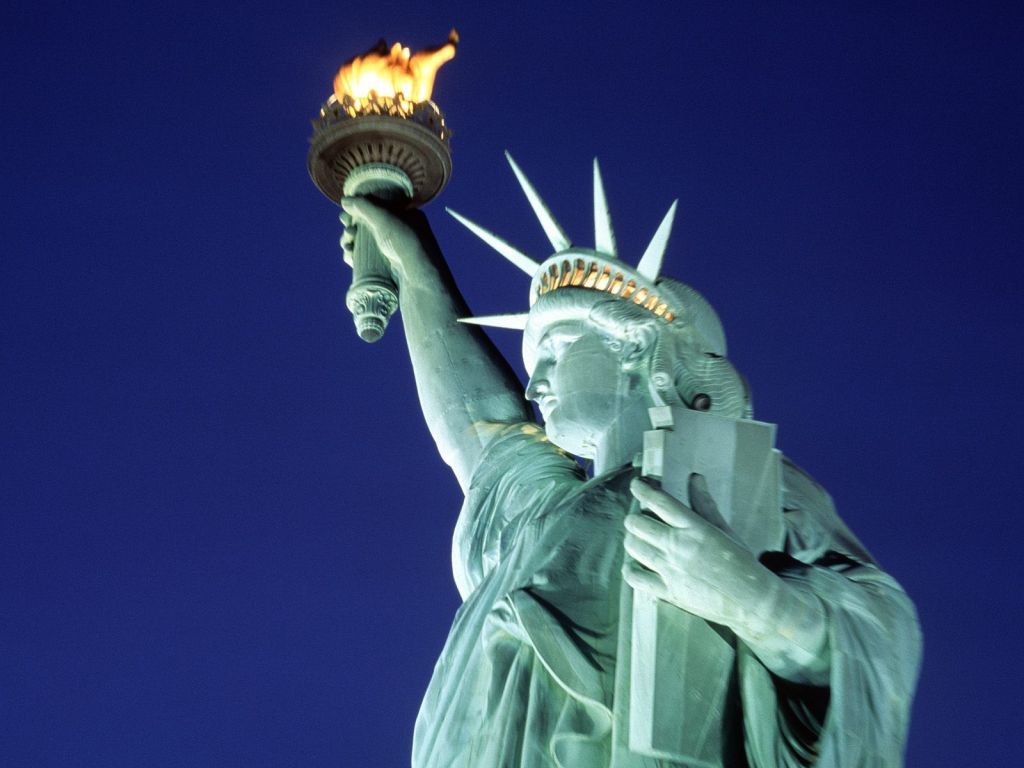Since we live in Brooklyn, I have crossed the Brooklyn Bridge countless times, but even when I have to crane my neck Brooklyn-bound from Manhattan, I look for Lady Liberty. She moves me every time with her blazing testimony to the truth of the human spirit. In difficult times—after 9-11, Hurricane Sandy, or current waves of human emigration—I like to see her steadfastly lighting the way.
The goddess Libertas, widely worshiped in Rome and symbolic of emancipation from slavery, has appeared in various forms throughout history, most majestically as The Statue of Liberty. Libertas seems always to have been represented as feminine, for the promise of liberation is new life, ever the gift of the maternal matrix, wellspring of birth and transformation. We recognize the power of a new beginning and its potential to redeem all in us that has been forsaken, oppressed, or denied.
Liberation is an image of what Jung called individuation, the process of discovering your innate potential and becoming wholly who you were meant to be. Individuation, “the central concept of my psychology,” is a process by which “the psyche is transformed or developed by the relationship of the ego to the contents of the unconscious.” Symbols spark individuation, for only a symbol has the numinous power to unite conscious and unconscious and awaken us to a new reality. Like the Statue of Liberty.
Conceived and built in France as a gesture of friendship between nations, Lady Liberty inspired people from her inception. More than 100,000 French people contributed funds to create the 30-story copper lady. When Congress refused to allocate the funds necessary to build the massive foundation for the 225-ton statue, 120,000 Americans gave money. A symbol mobilized thousands to give Lady Liberty a home in New York harbor. Artists donated paintings, children sent small change, and Emma Lazarus wrote her famous poem, which concludes:
Give me your tired, your poor,
Your huddled masses yearning to breathe free,
The wretched refuse of your teeming shore.
Send these, the homeless, tempest-tost to me:
I lift my lamp beside the golden door.
Lady Liberty represents more than freedom from injustice and oppression in the external world. She represents liberation in the inner world, as we set sail from restrictive beliefs, imposed roles, and one-sided attitudes. Like immigrants packed miserably in steerage for weeks, suffering and sacrifice often precede the discovery of new life. But if we embark on the journey of individuation, Lady Liberty will ever lift her lamp beside the golden door of wholeness.
AUTHOR
Deborah Stewart is a Jungian Analyst and Licensed Clinical Social Worker residing in Cape Cod, MA. You can find her at www.DeborahCStewart.com. She is Co-Creator of This Jungian Life Podcast. She is a member of the Philadelphia Association of Jungian Analysts, where she co-chairs and teaches in the training seminar and contributes to the Association’s blog. She is an active member of the Inter-Regional Society of Jungian Analysts and participates in other professional organizations. She has a special interest in trauma and is the author of Encounters with Monsters: The Significance of Non-Human Images of Trauma in the Psyche.

